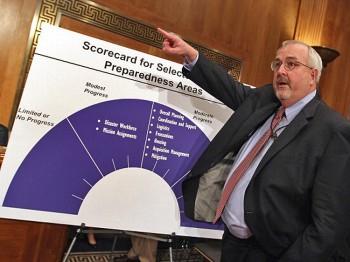[xtypo_dropcap]V[/xtypo_dropcap]ermont’s Fish and Wildlife Department recently announced the “adoption of a Bald Eagle Recovery Plan that will guide the restoration and management of bald eagles in the state in future years.”
The eagle, symbol and national bird of the United States, was once on the verge of extinction in the lower 48 states. The federal government declared it an endangered species in 1967 and a vigorous campaign for the restoration of our national bird ensued. The recovery effort was met with great success, and the bald eagle was officially taken off the national list of threatened and endangered species in 2007. Vermont, however, has been slower to reach the goal and the bird remains on the state’s endangered species list.
“Bald eagles are native to Vermont but were absent from the state as a breeding species for almost 70 years,” said Vermont Fish and Wildlife Commissioner Wayne Laroche in a press release.
In 2004, the Vermont Bald Eagle Restoration Initiative was made possible by a federal appropriation initiated by former Vermont Sen. James Jeffords. This was a partnership of many organizations and public volunteers in a translocation project, meant to nurture eaglets into independence for release into the wild. In three years, 29 young bald eagles fledged in the Deed Creek Wildlife Management Area in Addison, Vt.
Subsequent nesting successes followed in other parts of the state. “We are encouraged by the nesting success eagles had in 2010,” migratory bird biologist John Buck of the Vermont Fish and Wildlife’s said in the press release, “Nine bald eagle pairs nesting in Vermont produced five eagle fledglings.”
The bald eagle, a top predator, needs a specific eco-environment and habitat to survive. They are particularly sensitive to toxic chemicals, environmental contaminants, and bioaccumulation in their food chain. The greatest population decline for the bald eagle was seen between 1950 and 1970 when DDT use was widespread. The pesticide caused eagle and other birds’ eggshells to become so thin that they could not breed successfully.
The encroachment of urban development along shorelines or large bodies of water and open forest canopy structures (their preferred natural habitat) amounts to habitat loss critical for breeding, foraging, roosting, adequate food supply, and sufficient buffer from human disturbance.
To ensure the recovery project reaches a sustainable breeding population for the future, the plan details the continuing effort necessary. Monitoring, management, research, education, and outreach are needed so that Vermont can arrive at the stage of removing the eagle from its threatened and endangered species list.
The eagle, symbol and national bird of the United States, was once on the verge of extinction in the lower 48 states. The federal government declared it an endangered species in 1967 and a vigorous campaign for the restoration of our national bird ensued. The recovery effort was met with great success, and the bald eagle was officially taken off the national list of threatened and endangered species in 2007. Vermont, however, has been slower to reach the goal and the bird remains on the state’s endangered species list.
“Bald eagles are native to Vermont but were absent from the state as a breeding species for almost 70 years,” said Vermont Fish and Wildlife Commissioner Wayne Laroche in a press release.
In 2004, the Vermont Bald Eagle Restoration Initiative was made possible by a federal appropriation initiated by former Vermont Sen. James Jeffords. This was a partnership of many organizations and public volunteers in a translocation project, meant to nurture eaglets into independence for release into the wild. In three years, 29 young bald eagles fledged in the Deed Creek Wildlife Management Area in Addison, Vt.
Subsequent nesting successes followed in other parts of the state. “We are encouraged by the nesting success eagles had in 2010,” migratory bird biologist John Buck of the Vermont Fish and Wildlife’s said in the press release, “Nine bald eagle pairs nesting in Vermont produced five eagle fledglings.”
The bald eagle, a top predator, needs a specific eco-environment and habitat to survive. They are particularly sensitive to toxic chemicals, environmental contaminants, and bioaccumulation in their food chain. The greatest population decline for the bald eagle was seen between 1950 and 1970 when DDT use was widespread. The pesticide caused eagle and other birds’ eggshells to become so thin that they could not breed successfully.
The encroachment of urban development along shorelines or large bodies of water and open forest canopy structures (their preferred natural habitat) amounts to habitat loss critical for breeding, foraging, roosting, adequate food supply, and sufficient buffer from human disturbance.
To ensure the recovery project reaches a sustainable breeding population for the future, the plan details the continuing effort necessary. Monitoring, management, research, education, and outreach are needed so that Vermont can arrive at the stage of removing the eagle from its threatened and endangered species list.


